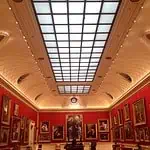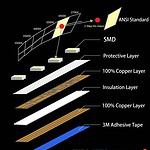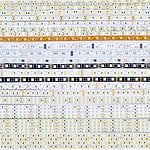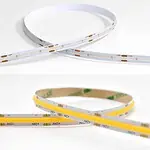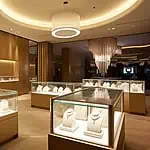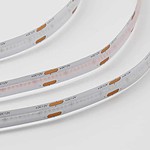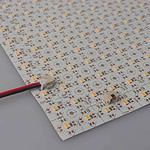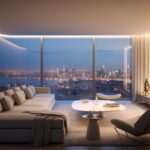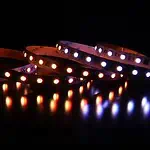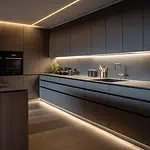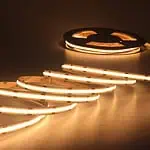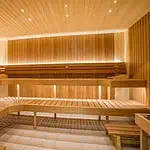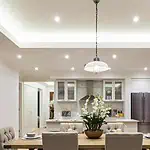When you walk into a gym, the first thing that grabs your attention might not be the equipment or the layout, but rather the lighting. Good lighting is essential because it sets the mood, helps you see clearly, and ensures you can work out safely. With the right lighting, every part of the gym is well-lit, making it easier to use equipment and avoid accidents. Plus, it creates an atmosphere that’s both energizing and comfortable, motivating you to push through your workout.
LED lighting has become the go-to choice for gyms, and for good reason. LEDs are incredibly energy-efficient, which means they use less electricity and help save on energy bills. They also last much longer than traditional lights, reducing the hassle and cost of frequent replacements. But beyond these practical benefits, LED lights provide superior lighting quality, offering bright, even illumination that enhances visibility without causing glare or flickering. This makes them perfect for a gym setting where clear, consistent light is essential.
This guide is designed to be your ultimate resource for understanding and implementing LED lighting in gyms. Whether you’re setting up a new gym, upgrading your current lighting, or just curious about how LED lights can make a difference.
This guide will walk you through everything you need to know about LED gym lighting. From the basics of LED technology to detailed advice on choosing the right fixtures and designing your lighting layout, we’ve got you covered. Let’s get straight to it.
What Exactly is LED Gym Lighting?
LED gym lighting refers to the use of LED (Light Emitting Diode) technology to illuminate gym and fitness spaces. Unlike traditional lighting options like fluorescent or incandescent bulbs, LEDs are more energy-efficient, longer-lasting, and provide better quality light. In a gym setting, this means bright, even lighting that enhances visibility, safety, and the overall workout experience.
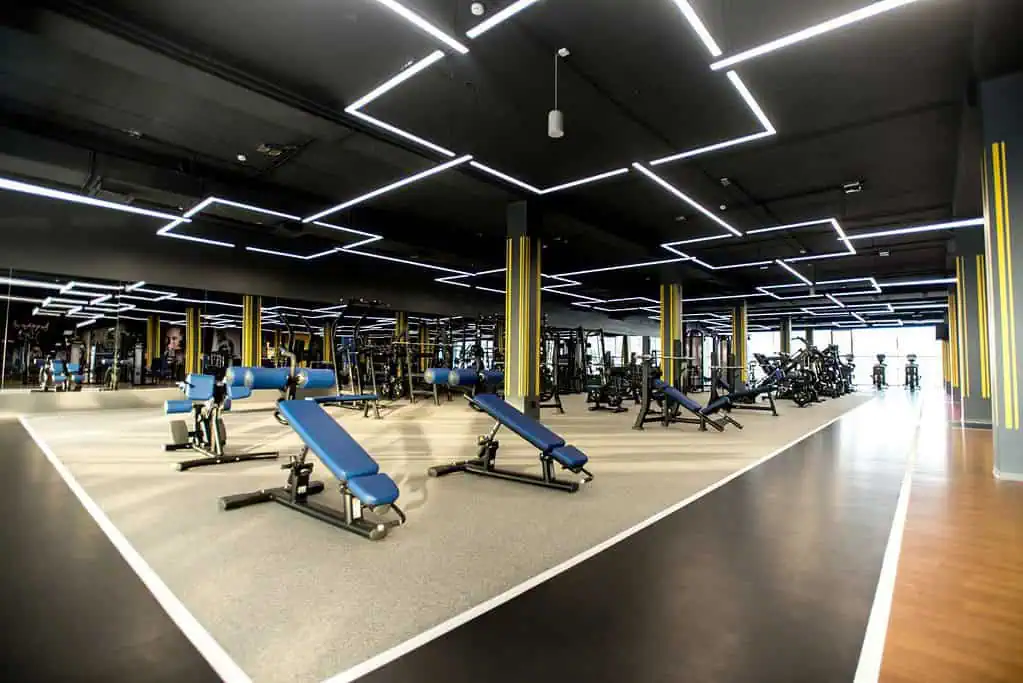
LED lights are particularly well-suited for gyms because they offer consistent, high-quality illumination that can be tailored to different areas of the gym, such as weightlifting zones, cardio areas, and fitness studios. With options for varying brightness levels and color temperatures, LED gym lighting can be customized to create the right atmosphere for each type of activity, whether it’s an intense workout or a relaxing yoga session.
Why LED Lighting is Perfect for Gyms?
LED lighting is a great fit for gyms because it offers everything a fitness space needs. It’s energy-efficient, meaning it helps save on electricity costs while providing bright, consistent light that makes the gym safe and inviting. LEDs are also durable and long-lasting, so they can handle the heavy use that gyms typically experience. Plus, with options to adjust brightness and color, LED lighting can create the perfect atmosphere for any workout area, whether it’s high-energy cardio or a calm yoga session.
Energy Efficiency
One of the biggest advantages of using LED lighting in a gym is the energy savings. Gyms require a lot of light, often for extended hours each day, which can drive up electricity costs. LED lights use far less energy than traditional lighting options, such as incandescent or fluorescent bulbs.
For example, switching to LEDs can reduce energy consumption by up to 70%, leading to significant savings on your utility bills. Over time, these savings can more than offset the initial cost of installing LED lights.
Improved Lighting Quality
Lighting quality is crucial in a gym setting. You need bright, consistent light to ensure that members can see clearly and work out safely. LED lights provide just that clear, even illumination that reduces shadows and improves visibility.
This is especially important in areas like weightlifting zones, where good lighting can help prevent accidents, or in cardio areas, where bright, energizing light can keep members motivated. Unlike some traditional lights, LEDs don’t flicker, which can be distracting and uncomfortable, especially during intense workouts.
Durability and Long Lifespan
Gyms are busy places with a lot of activity, so you need lighting that can withstand the environment. LED lights are known for their durability. They’re resistant to shock, vibrations, and external impacts, making them ideal for gyms where equipment is frequently moved around or where there’s a lot of foot traffic. The long lifespan of LEDs often lasts tens of thousands of hours, which means fewer replacements and less maintenance, saving you time and money.
Customization and Flexibility
LED lighting offers incredible flexibility when it comes to customization. You can choose from a range of color temperatures to create the right atmosphere for different areas of your gym. For example, you might want cooler, brighter light in cardio zones to keep energy levels high, while a warmer, softer light could be better for yoga or stretching areas to promote relaxation.
Many LED lights are also dimmable, allowing you to adjust the brightness to suit different times of day or types of classes. Plus, with smart lighting controls, you can easily manage your gym’s lighting from a central system, making it easy to create the perfect environment for every workout.
Key Considerations for LED Gym Lighting
When planning LED lighting for your gym, there are a few important things to keep in mind. You’ll need to think about how bright the lights should be, what color temperature works best for different workout areas, and how to ensure the light is spread evenly throughout the space.
It’s also important to consider energy efficiency and whether you want options like dimming or smart controls to adjust the lighting as needed. These key factors will help you in crafting a gym environment that is brightly illuminated, comfortable, and efficient.
Brightness Levels (Lumens)
When planning gym lighting, one of the first things to consider is brightness, which is measured in lumens. The right brightness level is crucial for ensuring that your gym is well-lit and safe. Different areas of the gym may require different brightness levels.
For example, general workout areas typically need around 300-500 lumens per square meter, while more focused areas, like weightlifting zones, might require brighter lighting around 500-700 lumens per square meter. Understanding the lumens needed for each area helps you choose the right LED lights to ensure every part of your gym is properly illuminated.
Color Temperature
Color temperature, measured in Kelvins (K), affects the mood and functionality of a space. In a gym, you’ll want to use color temperatures that match the activity happening in each area. Cooler color temperatures (around 5000K-6500K) produce a bright, bluish-white light that’s perfect for cardio areas and weight rooms, where you want to keep energy levels high. In contrast, warmer temperatures (around 2700K-3500K) create a softer, more relaxing light, making them ideal for yoga studios or meditation areas.
Helpful to read: How To Use LED Light Colors For Different Moods?
Uniformity and Light Distribution
Ensuring that light is evenly distributed throughout the gym is important to avoid dark spots or areas that are too bright. Uniform lighting helps create a comfortable environment where members can see clearly without straining their eyes. To achieve this, consider the layout of your gym and the placement of light fixtures. Use a mix of lighting types, such as overhead lights and wall-mounted fixtures, to spread light evenly across the space. Reflective surfaces, like mirrors, can also help bounce light around the room, enhancing uniformity.
Energy Efficiency
While LED lights are inherently energy-efficient, there are ways to maximize these savings even further. Choose LED lights with high lumens per watt (lm/W) ratings, which indicate how efficiently the light converts electricity into visible light.
The higher the rating, the more light you get for each watt of energy used. Also, consider using motion sensors or timers to ensure lights are only on when needed, particularly in less frequently used areas like locker rooms or storage spaces.
Dimming and Controls
The ability to dim your gym’s lights can be a game-changer for creating the right atmosphere and saving energy. Dimmable LED lights allow you to adjust the brightness based on the time of day, the type of activity, or the number of people in the gym.
For example, you might want brighter lights during peak hours and softer lighting during early mornings or late evenings. Smart lighting controls make this even easier, letting you program settings or adjust lighting remotely via an app, ensuring your gym is always perfectly lit.
Types of LED Lighting for Gyms
There are different types of LED lighting that work well in gyms, each suited to specific needs. From high bay lights for large, open spaces to recessed lights that give a clean, modern look, choosing the right type of LED lighting can make a big difference in how your gym feels and functions. Understanding these options will help you pick the best lights for each area, ensuring your gym is bright, welcoming, and fit for every workout.
High Bay Lights
High bay lights are ideal for gyms with high ceilings, such as large fitness centers or basketball courts. These lights are designed to provide powerful, widespread illumination from above, ensuring that even the largest spaces are well-lit.
LED high bay lights are energy-efficient and offer excellent brightness, making them perfect for areas where clear, consistent lighting is essential. They are often used in multi-sport arenas and large commercial gyms where the ceiling height can be 20 feet or more.
Recessed Lights
Recessed LED lights, also known as downlights, are installed directly into the ceiling, creating a clean and modern look. These lights are great for gyms that want a minimalist aesthetic without visible fixtures.
Recessed lights provide even, direct lighting and are especially useful in areas where you need to avoid shadows, such as weight rooms or functional training areas. They’re also ideal for lower ceilings, ensuring that the space feels open and uncluttered.
Linear LED Lights
Linear LED lights are long, narrow fixtures that are perfect for lighting large, open spaces like gym floors or studios. These lights offer excellent light distribution, ensuring that every corner of the room is evenly illuminated.
Linear LEDs are versatile and can be installed in various configurations, whether in continuous rows or individually spaced out. They are especially popular in gyms because they provide a sleek, modern look while delivering bright, uniform light.
LED Panels
LED panels are flat, rectangular lights that provide soft, even illumination, reducing glare and creating a comfortable environment. They are particularly well-suited for fitness studios, yoga rooms, and other areas where a calm, focused atmosphere is important.
LED panels are often installed in drop ceilings, offering a seamless and professional appearance. Their design ensures that light is evenly spread across the room, making them a great choice for any space where balanced lighting is needed.
Accent Lighting
Accent lighting is used to highlight specific areas or features in the gym, such as a reception desk, signage, or special equipment. LED strips, spotlights, and wall washers are common types of accent lighting that can add visual interest and guide attention to key areas.
In a gym, accent lighting can also be used to create zones, helping to define different workout areas and enhance the overall aesthetic. For example, LED strips under treadmills or along the edges of a boxing ring can make these areas stand out while providing additional illumination.
Designing Your Gym Lighting Layout
Designing the right lighting layout for your gym is essential for creating a space that’s both functional and inviting. It’s about more than just placing lights; it’s about understanding how different areas of the gym will be used and ensuring each one is properly lit. By carefully planning your lighting layout, you can enhance visibility, set the right mood, and make sure every corner of your gym is safe.
Assessing the Space
Before installing LED lights, it’s important to assess the gym’s layout and structure. Start by looking at the size of the space, ceiling height, and any architectural features that might affect lighting. Consider how the gym is used and identify areas that need different levels of lighting. Such as cardio zones, weightlifting areas, and studios. Taking the time to understand the space will help you plan an effective lighting layout that meets all your gym’s needs.
Zoning Your Gym
Dividing your gym into zones is a practical way to ensure that each area gets the right amount of light. For example, you might have a bright, energetic zone for cardio machines, a well-lit area for free weights and functional training, and a softer, more relaxing zone for stretching or yoga.
Each zone may require different types of lighting fixtures, from high bay lights for large open areas to recessed lights for focused tasks. Creating zones also allows you to control lighting more effectively, turning lights on or off as needed based on gym usage.
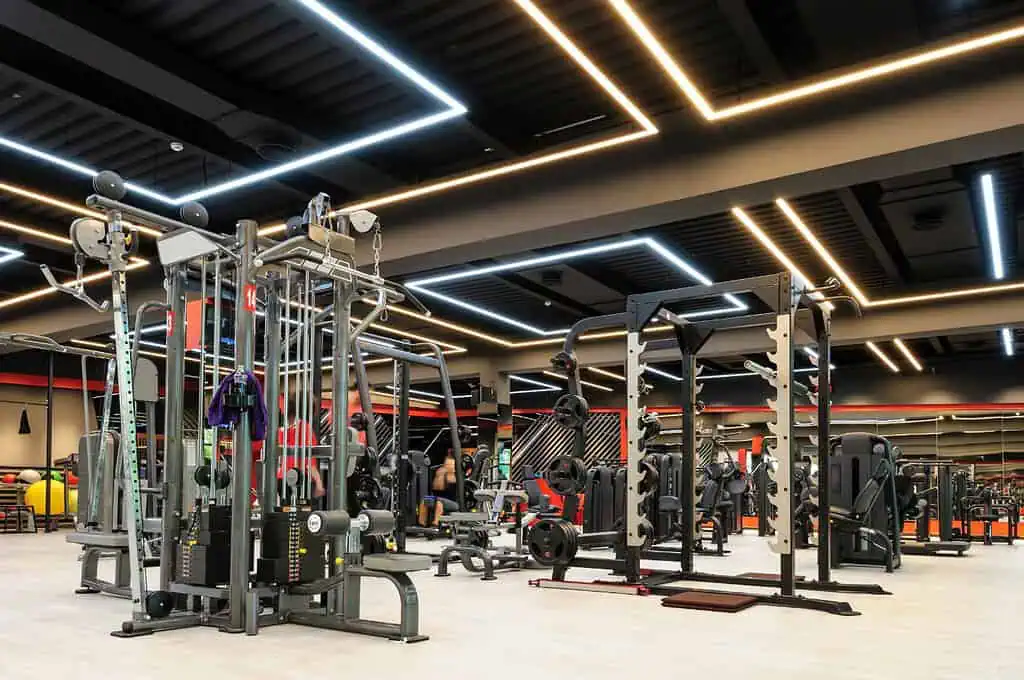
Calculating the Number of Lights
Determining how many lights you need for each zone is essential for achieving the right balance of light. A simple formula to calculate the required number of lights is to first calculate the total lumens needed for the area (based on the size of the space and recommended lumens per square meter) and then divide by the lumens provided by each light fixture. This will give you the number of fixtures required to achieve uniform lighting. Remember to consider the spacing between lights to avoid dark spots or overly bright areas.
Installation Tips
Proper installation is key to getting the most out of your LED gym lighting. Make sure that lights are installed at the correct height and spacing to ensure even coverage. For high bay lights, this might mean hanging them from the ceiling at a certain height, while recessed lights should be spaced evenly to avoid shadows.
It’s also important to consider the direction of the lights. Some fixtures, like spotlights, need to be angled correctly to highlight specific areas. Finally, always follow the manufacturer’s installation guidelines and consider hiring a professional if you’re unsure about the setup.
Maintenance and Care for LED Gym Lights
Taking care of your LED gym lights is important to keep them working well and lasting a long time. Regular maintenance, like cleaning the lights and checking for any issues, helps ensure your gym stays bright and safe. By following some simple care tips, you can make sure your LED lights continue to provide great lighting for years to come.
Routine Cleaning and Care
Keeping your LED lights clean is important for maintaining their brightness and extending their lifespan. Dust and dirt can accumulate on the fixtures, reducing their effectiveness. To clean your LED lights, use a soft cloth or duster to gently remove any debris from the surface.
For tougher grime, you can use a mild cleaning solution, but be sure to avoid getting any liquid into the electrical components. Regular cleaning not only keeps your lights shining brightly but also ensures they last longer.
Troubleshooting Common Issues
Even though LED lights are generally low-maintenance, you might encounter some issues over time, such as flickering, dimming, or lights that won’t turn on. If your LED lights start flickering, it could be due to a loose connection, an incompatible dimmer switch, or voltage fluctuations.
If the lights are dimming, check for any dust buildup, or consider replacing the bulbs if they are old. For lights that don’t turn on, inspect the wiring and connections to ensure everything is secure. If problems persist, it might be time to consult a professional electrician.
Upgrading and Replacing LEDs
LED lights have a long lifespan, but eventually, you might need to upgrade or replace them. When it’s time to replace your LEDs, look for bulbs or fixtures that match the specifications of your existing setup, such as wattage, lumens, and color temperature.
If you’re upgrading to a new type of LED light, consider how it will fit with your current layout and whether any adjustments need to be made to the wiring or controls. Upgrading your lights can also be an opportunity to incorporate new features, such as smart controls or higher-efficiency bulbs.
Energy Efficiency and Cost Analysis
Understanding energy efficiency and cost analysis is key when choosing lighting for your gym. LED lights use less electricity than traditional bulbs, which can significantly lower your energy bills. By analyzing the costs and savings, you can see how investing in LED lighting can be a smart, cost-effective choice for your gym in the long run.
Calculating Energy Savings
One of the biggest advantages of switching to LED lighting is the potential for significant energy savings. To calculate your savings, start by comparing the wattage of your existing lights with the wattage of the LED lights you plan to install.
For example, if your current setup uses 1000 watts and you switch to LEDs that use only 300 watts, you’re saving 700 watts every hour the lights are on. Multiply this by the number of hours the lights are used each day, and you can calculate the total energy saved over time, translating that into cost savings on your energy bills.
Return on Investment (ROI)
While the initial cost of installing LED lights may be higher than traditional lighting, the long-term savings often result in a quick return on investment (ROI). To calculate your ROI, consider the cost of the LED lights, the installation expenses, and the expected savings on your energy bills. For most gyms, the ROI period is relatively short, often just a few years, after which the energy savings continue to accumulate as pure savings.
Incentives and Rebates
In many areas, government incentives or rebates are available for installing energy-efficient lighting like LEDs. These programs are designed to encourage businesses to reduce their energy consumption and carbon footprint.
Check with your local utility company or government agencies to see what incentives are available in your area. Applying for these rebates can significantly reduce the upfront cost of your LED lighting installation, making the switch even more cost-effective.
Things To Know Before Buy LED Lighting for a Gym
As soon as you start looking for LEDs for your gym, you will come across several terms. You must understand what they mean to find a suitable solution for yourself. Let’s look at them and some other important elements that you need to consider before picking a fixture for the gym.
1. Color Temperature
Color temperature determines the color emitted by a particular LED. It is measured on a kelvin scale that ranges from 1,000K to 10,000 K. Lights on the lower end of the spectrum emit warm light, producing a cozy vibe. Although it is inviting, it creates a cozy atmosphere which is not ideal for a gym. You would want people to be active in the gym, which can be achieved by moving beyond 4,000K on the Kelvin scale. At this temperature, LEDs will emit cool light that mimics natural light and makes the members feel active.
That said, there are also some areas in the gym that will need lower color temperatures. For example, the locker room and showers do not require that high color temperature. Thus, you can go for spaces with a price lower than 4,000K.
2. Lumens
Lumens determine the brightness of the light. Light with a higher lumen will produce more brightness and light up a large area, and vice versa. You must calculate a gym’s total lumens and then pick multiple fixtures to reach that sum. Typically, gyms require 20 lumens per square foot. You can calculate the total lumen requirements by multiplying the square feet of the gym by 20. Be mindful that it is the requirement of workout areas; you can use lower lumens in locker and shower rooms.
3. Sensors
Some areas of the gym must be lighted at all times, but others need the light occasionally. In the latter, you can save a decent amount of energy by getting smart lights with sensors. Such lights will automatically turn on and off based on requirements. Hence, you would not have to keep them on at all times. The smart lights also offer you fun remote controls. For example, you can change the color, temperature, and brightness with a tap on your phone or a dedicated remote control. With one light, you can create different vibes in the same place.
4. Designs of Fixtures
In addition to color temperatures and CRIs, the designs of LEDs can also vary. The different types of fixtures will emit light in different ways. For example, a spotlight will concentrate the beam and highlight a particular area. In contrast, a floodlight spreads the beam and highlights a larger area. Before getting them for the gym, you must look for the type of fixture and its purpose.
To keep it simple, there are three types of light that you would want in the gym: accent, ambient, and decorative. Search for the fixtures according to these requirements, and you will never go wrong with the design.
How To Design The Layout of LED Gym Lighting
Designing the layout for LED gym lighting is more than just hanging lights; it’s about creating the right ambiance, ensuring safety, and optimizing performance. Whether you’re setting up a small fitness studio or a large sports complex, the lighting layout can significantly impact the user experience. Here’s a step-by-step guide to help you through the process.
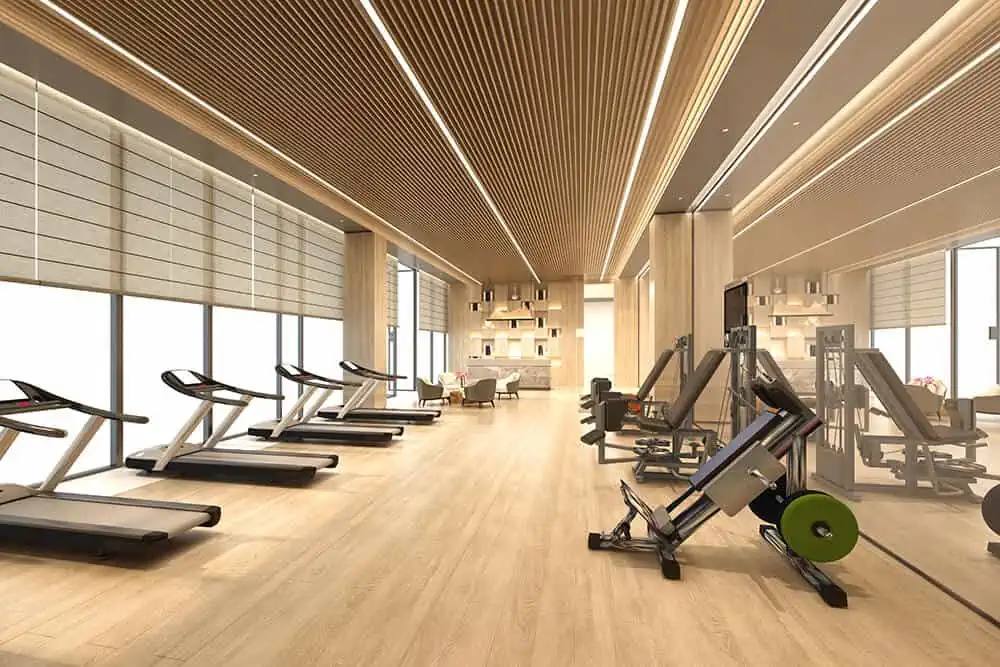
Step 1: Assess the Gym’s Purpose and Space
Understand the Type of Activities: Before diving into the technical details, start by understanding what types of activities will take place in the gym. Are you lighting up a space primarily for weightlifting, cardio exercises, yoga, or sports like basketball or volleyball? Different activities have varying lighting needs. For example:
- Weightlifting areas might require bright, focused lighting.
- Yoga studios could benefit from softer, more diffused light to create a calming atmosphere.
- Sports courts typically need uniform lighting without shadows to avoid disrupting play.
Measure the Space: Next, measure the dimensions of the gym, including ceiling height, to determine how much lighting is needed. High ceilings might require powerful, focused lights, while lower ceilings can work with less intense fixtures.
Step 2: Calculate the Required Lighting Levels
Determine Lux Levels: The brightness of lighting is measured in lux, which indicates the amount of light per square meter. The recommended lux levels for different gym areas are as follows:
- General gym areas: 300-500 lux
- Sports courts: 500-750 lux
- Functional training zones: 200-400 lux
Use Lighting Calculation Tools: You can use online tools or software like Dialux or Relux to calculate how many LED lights you’ll need based on the space size and desired lux levels. These tools help you simulate different lighting setups and find the most effective layout.
Step 3: Choose the Right LED Fixtures
Select Fixture Types: LED fixtures come in various forms, each suited to different parts of the gym:
- Linear LED lights: Ideal for general gym areas and weightlifting zones.
- High bay LED lights: Best for large gyms with high ceilings, such as sports halls.
- Recessed or track lighting: Suitable for smaller, more intimate spaces like yoga studios.
Consider Color Temperature: The color temperature of the lights, measured in Kelvins (K), affects the ambiance:
- 5000K-6500K (Daylight): Creates a bright, energizing environment, perfect for high-energy activities.
- 3000K-4000K (Warm white): Provides a softer, more relaxing atmosphere, suitable for yoga or stretching areas.
Step 4: Plan the Lighting Layout
Design for Uniformity: Uniform lighting is crucial to avoid shadows and ensure safety. Distribute the LED fixtures evenly across the ceiling. For larger gyms, consider a grid layout that ensures consistent lighting across all areas.
Focus on Key Areas: Identify specific zones that need extra lighting, like weight racks, mirrors, and entryways. Use spotlights or additional fixtures to highlight these areas.
Mind the Angles and Glare: Position lights at angles that minimize glare, especially in areas with mirrors. For sports courts, ensure the lights are positioned to avoid blinding players during games.
Step 5: Install and Test the Lighting
Proper Installation: Once you’ve finalized the layout, it’s time for installation. Ensure that the lights are securely mounted, wiring is done correctly, and all safety standards are met. If you’re not experienced in electrical work, it’s best to hire a professional.
Test and Adjust: After installation, turn on the lights and check the overall brightness, uniformity, and any potential glare. Make adjustments as needed, such as changing angles or adding diffusers to reduce harsh lighting.
FAQs
Lighting is important for the gym for reasons including, but not limited to, utility, aesthetics, safety, and reducing gym overhead charges.
While the initial cost of LED lights may be higher than traditional options, the long-term savings on energy bills and reduced maintenance costs make them a cost-effective investment. There may be rebates or incentives available to offset some of the upfront costs.
LED lights can last up to 25,000 to 50,000 hours or more, depending on usage and maintenance. In a gym that operates for long hours, this long lifespan means fewer replacements and lower maintenance costs over time compared to traditional lighting options.
Yes, LED lights are highly energy-efficient and use significantly less power than traditional lighting. This can result in substantial savings on energy bills, making LED lighting a cost-effective choice for gyms that need to keep lights on for extended periods.
Cooler color temperatures (around 5000K to 6500K) are often preferred in gyms because they provide bright, crisp light that energizes and enhances focus. Warmer temperatures (around 2700K to 3500K) might be better suited for relaxation areas like yoga studios or stretching zones.
The required lumens depend on the specific area of the gym. General workout areas usually need about 300-500 lumens per square meter, while areas like weightlifting zones might require 500-700 lumens per square meter to ensure proper visibility and safety.
Yes, LED lights are perfect for gyms because they provide consistent, high-quality lighting that’s durable and energy-efficient. They also offer flexibility in brightness and color temperature, which can be customized to suit different areas of the gym.
Yes, many LED gym lights are compatible with smart technology, allowing you to control them via apps, set schedules, and adjust brightness or color temperature remotely. This flexibility makes it easier to create the right lighting environment at any time.
Wrapping Up
LED lighting offers numerous benefits for gyms, including improved energy efficiency, better lighting quality, and significant cost savings. By choosing the right LED fixtures and designing a thoughtful lighting layout, you can create a gym environment that is safe, welcoming, and motivating for members.
If you’re considering upgrading your gym’s lighting, start by assessing your current setup and identifying areas for improvement. Look for energy-efficient LED lights that match your gym’s needs, and consider working with a professional to ensure proper installation. Remember, the long-term savings and enhanced member experience make LED lighting a smart investment for any gym.
Ready to transform your gym with LED lighting? Explore your options, consult with experts like LEDYi, and start planning your upgrade today. Whether you’re aiming to reduce energy costs, improve lighting quality, or create a more dynamic workout environment, LED lighting is the way to go. Don’t wait and take the first step toward better gym lighting now!
